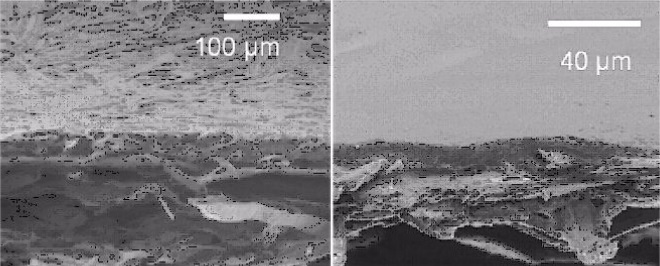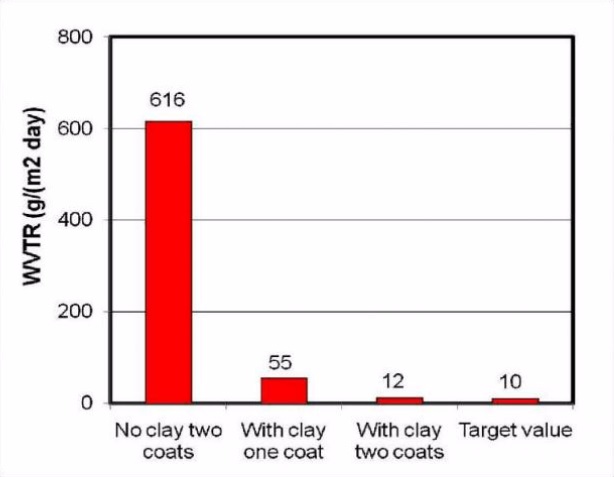Polymer-clay nanocomposites for packaging - FlexPakRenew
Design and development of an innovative eco-efficient low-substrate flexible paper packaging from renewable resources to replace petroleum based barrier films
Aims
- development of a substrate with significantly enhanced barrier properties via knowledge-led improvement and innovation such as the use of selected materials in the bulk and the deposition of a thin film of renewable materials during the paper forming
- development of water borne coatings made from renewable materials (starches, functionalised starches, starch derivatives or modified hemicelluloses) and reinforced by (low eco-footprint) minerals or renewable nanoparticles to optimise the desired properties
- development of high barrier paper arising from innovative surface treatments: Solvent free chemical grafting and vacuum coating
It is now well established that the growth and production of food requires 9 GJ of energy per individual each year. Consequently, it is imperative that as much food as possible is consumed and wastage minimised. Barrier packaging has a critical role to play in prolonging the shelf life of food by controlling the movement of water and oxygen to the packaged product.
The quality and shelf-life of food degrades under the influence of oxygen or water vapour. The presence of oxygen can damage flavours and colours, turn fatty foods rancid, promote microbial growth on meat, and cause browning or bleaching of the packaged food. Consequently, it is critically important to introduce strategies to minimise the effect of oxygen, moisture and microbial/fungal attack on the food product and the package which protects it.
The current state of the art for commercial barrier layers relies on flexible films fabricated from petroleum-derived polymer films such as PET, Nylon or polyethylene. Overall, these films are very effective and currently outperform the very best sustainable competitors but with the attendant penalty of a very large carbon footprint.
MERI’s contribution to this challenge is the formulation of starch:plasticizer:clay coatings to improve the ability of coated paper to minimise the movement of water vapour through the package and into the packaged food.
The electron micrographs in Figure 1 show how the starch:clay coating makes the rough, fibrous surface of the uncoated paper much smoother by forming a continuous, coherent film on the paper substrate. There are many commercial coatings that do the same thing – but they rely on petroleum derived chemicals to achieve it.
The starch:clay coating has a profound effect on the Water Vapour Transmission Rate (WVTR) (Figure 2) reducing it from 616 g per square metre per day to 12 g per square metre per day. This latter value is extremely competitive with that obtained using the oil-derived counterparts.

Figure 1. Scanning electron micrographs of an uncoated paper board (left) and a sample of the same board with two coats of the starch:plasticizer:clay coating.

Figure 2. The reduction in water vapour transmission rate when clay is added to a starch:plasticizer coating formulation. The value of ca. 12 g per metre squared per day is directly competitive with commercial, petroleum derived barrier coatings.
